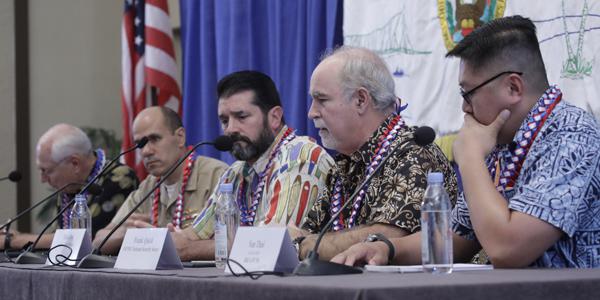Interoperability Needs a New Meaning
The pursuit of coalition interoperability has become more difficult as new technologies emerge, potential operations become more diverse and vastly different militaries look at cooperative actions. This kaleidoscope of coalition operations was the focus of a panel at AFCEA’s TechNet Asia-Pacific 2018, held November 14-16 in Honolulu.
One of the biggest problems facing the quest for interoperability is that no one knows precisely what it should be.
We must clearly identify what the interoperability mission requirements are, or else we’ll solve the wrong problems.—Capt. Ron Gumbert, USN (Ret.), Gartner #AFCEATechNet
— Bob Ackerman (@rkackerman) November 14, 2018
“We must clearly identify what the interoperability mission requirements are, or else we’ll solve the wrong problems,” said Capt. Ron Gumbert, USN (Ret.), Gartner. Reaching that preliminary step will require a clear view of the operational realm, said Capt. Allen Edmiston, USN, of the U.S. Indo-Pacific Command. “We need to be able to understand the environment in which key decisions are being made—situational awareness of the cyber environment, the physical environment and the coalition partners out there,” the Capt. Edmiston offered.
We need to be able to understand the environment in which key decisions are being made—situational awareness of the cyber environment, the physical environment and the coalition partners out there.—Capt. Allen Edmiston, USN, U.S. Indo-Pacific Command #AFCEATechNet
— Bob Ackerman (@rkackerman) November 14, 2018
Frank T. Quick, MITRE National Security Sector, added, “We can get system A to talk to system B, but if it’s not for mission success, we’ve wasted our money.”
As with many defense technology challenges, industry was held up as an example. “Industry partners with competitors all the time, and they don’t open up all of their secrets. That is a coalition network, why can’t DOD do that?” Quick asked.
Industry partners with competitors all the time, and they don’t open up all of their secrets. That is a coalition network; Why can't DOD do that?—Frank T. Quick, @MITREcorp National Security Sector #AFCEATechNet
— Bob Ackerman (@rkackerman) November 13, 2018
This panel discussion represented the first of several steps to answer these and other questions. On April 16-17 at Fort Shafter, Hawaii, a coalition interoperability forum will examine how to work with industry and foreign partners, Capt. Edmiston announced. This forum will explore coalition interoperability issues ranging from national policies to game-changing innovations.





Comments